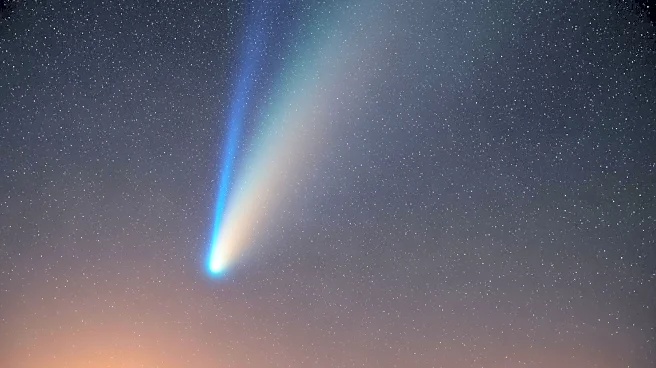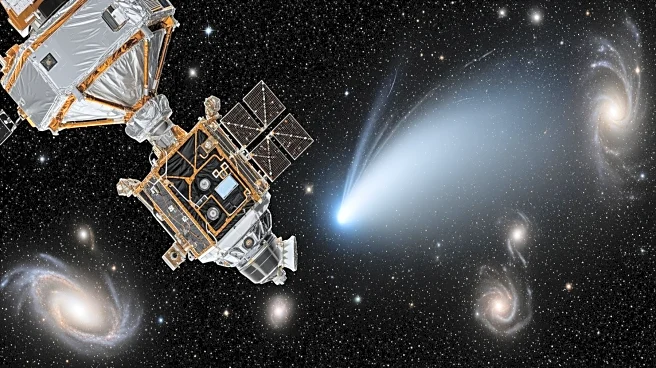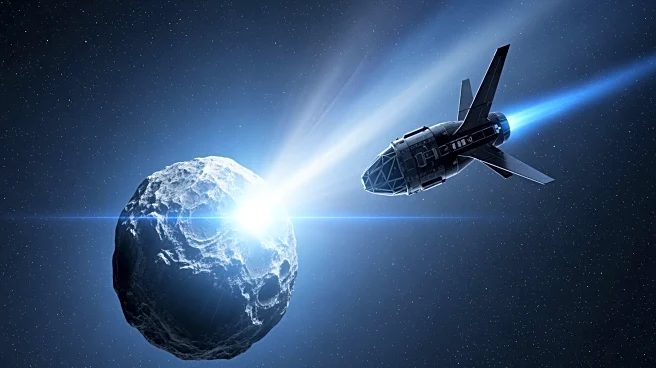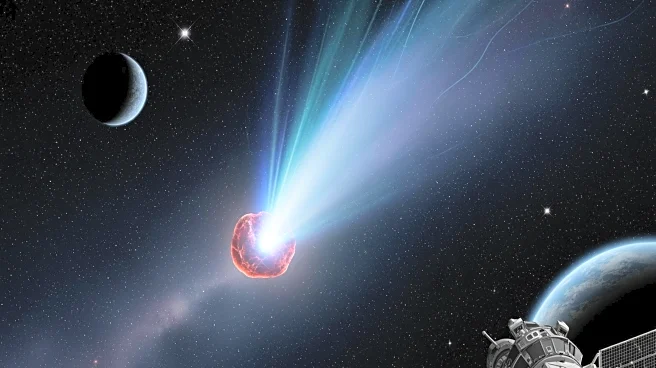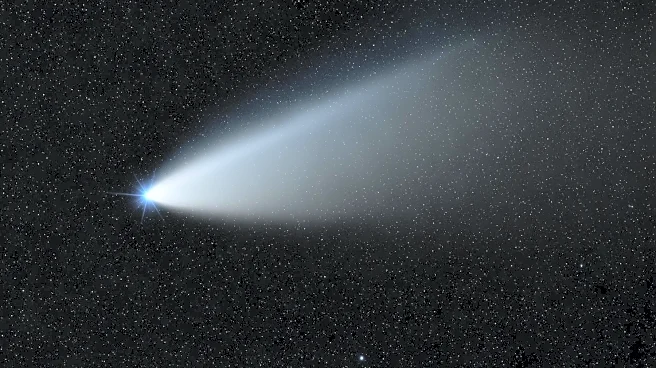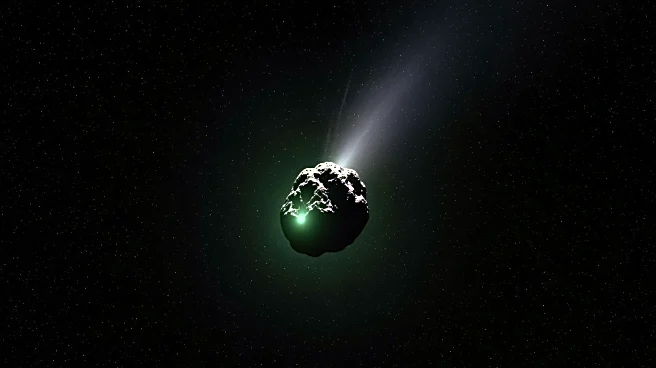What's Happening?
Astronomers are currently debating the visibility of the tail of interstellar comet 3I/ATLAS following its perihelion on October 30, 2025. Recent images captured between November 5 and 9 have sparked discussions
about whether the comet exhibits a conventional tail. Some images show a compact coma with little obvious dust tail, leading to claims that the comet is behaving unusually. However, experts caution that viewing geometry can affect the visibility of the tail, and gas emissions can dominate the appearance around perihelion. The comet, which is only the third confirmed interstellar visitor after 'Oumuamua and 2I/Borisov, is not a threat to Earth, with its closest approach being approximately 270 million kilometers on December 19, 2025.
Why It's Important?
The debate over the tail visibility of comet 3I/ATLAS is significant as it challenges conventional understanding of cometary behavior and appearance. The comet's interstellar origin adds to its scientific intrigue, offering insights into the composition and dynamics of objects from outside our solar system. The observations and analyses could enhance knowledge of cometary structures and contribute to the broader field of astronomy. As the comet is not a threat to Earth, it provides a unique opportunity for astronomers to study an interstellar object without the concerns of potential impact.
What's Next?
As comet 3I/ATLAS continues to climb out of solar glare, coordinated photometry and deep imaging are expected to clarify its tail and jet morphology over the next one to two weeks. Observations from Mars spacecraft campaigns and attempts by ESA's Jupiter Icy Moons Explorer (JUICE) this month may provide additional insights. The comet's closest approach to Earth on December 19, 2025, will offer a good window for follow-up spectroscopy and imaging from both hemispheres, potentially refining current interpretations.
Beyond the Headlines
The comet's behavior has sparked some speculative commentary about non-natural origins, with claims that its jet geometry or brightness changes could hint at artificial influences. However, mainstream researchers emphasize that these phenomena have cometary explanations, particularly given the viewing geometry near the Sun. Such claims remain hypotheses awaiting further data, highlighting the importance of rigorous scientific analysis in distinguishing natural from potential artificial phenomena.





